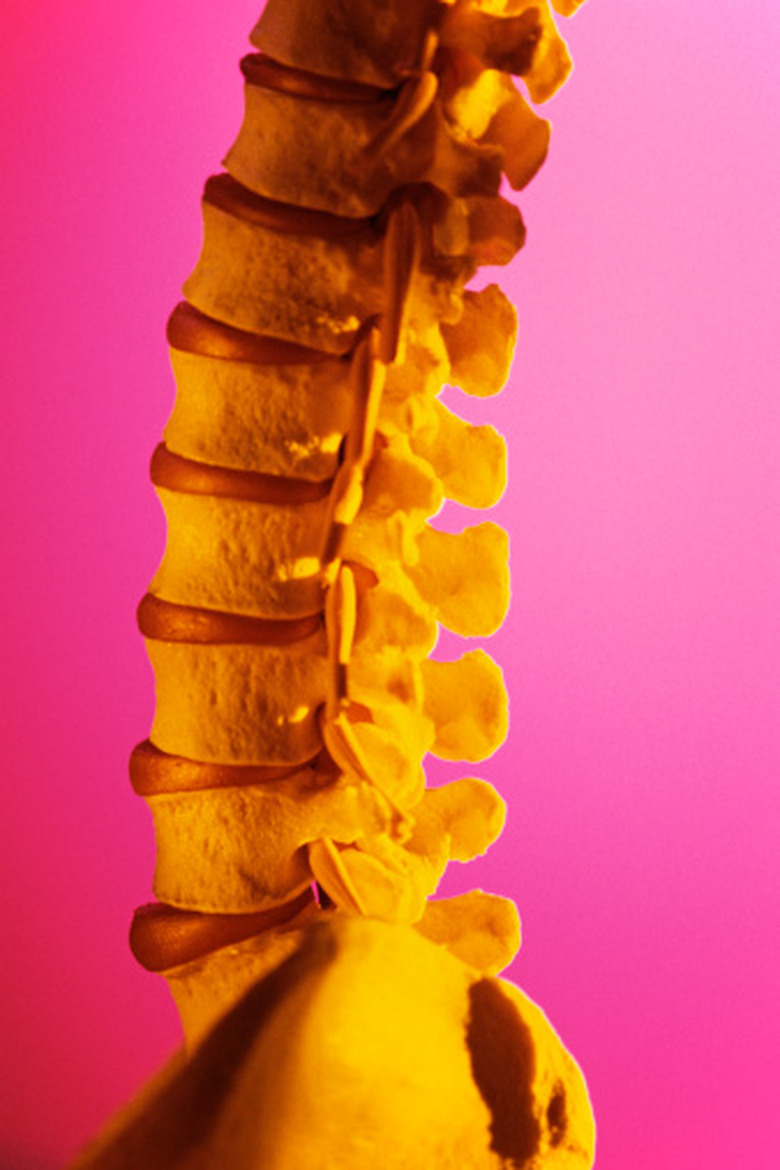How Are Bird Bones Different From Human Bones?
Skeletal structure in animals is largely dependent on evolution. As animal species adapt to different ecological niches, their physical structures often change over time as natural selection rewards with reproductive success those individuals with the most successful adaptations. Humans are adapted to a life of walking and running, and so our bones have evolved to support our upright habits. Birds, however, are heavily adapted to a life of flight, which is reflected in the structure and composition of their skeletons.
Ossification
Ossification
Bird skeletons are extremely thin, but must be very strong to survive the rigors of flight. One adaptation allowing this is the fusing of bones into larger, more rigid structures such as the pygostyle, located at the base of a bird's vertebral column. It is thought that this feature evolved because a free-moving tail like that of Archaeopteryx (considered to be the "first bird") is not as useful for flight control as a fixed tail. These fusions, or ossifications, are much more common in birds than other animals. In humans, only the cranium, pelvis, and the ends of the long bones in the limbs which terminate in growth plates undergo this fusion.
Bone Mass
Bone Mass
Another adaptation helpful for flight was a reduction in absolute bone mass. Unlike humans — who have very massive bones — birds have pneumatized bones, which contain hollow chambers accessible to air. These air pockets are honeycombed with criss-crossing struts or trusses which increase structural strength while also reducing mass. The type of locomotion a particular species of bird favors seems to affect the number of hollow bones it has evolved; birds which soar or glide for long periods of time have the largest number of hollow bones, while swimming and running birds such as penguins and ostriches have none at all.
Wishbone
Wishbone
Birds are the only animals to have a fused collarbone, the wishbone, which extends down to the sternum and elongates into a keel structure. This special breastbone serves as an attachment point for the very robust muscles required for flight, or in the case of penguins, swimming. Flightless birds such as ostriches lack this keel. In contrast, the bones of the human torso are structured so that the strongest muscles are anchored from the back, supporting our heads and upright posture. This is necessary because a bird's skull comprises only about 1% of its body mass, while the human skull is about 5%.
Uncinate Process
Uncinate Process
Birds also possess an uncinate process, which humans lack. These features are barbed extensions of bone which help to strengthen a bird's thin ribcage by overlapping with the rib behind it. The name comes from the Latin word "uncinatus," meaning "hooked." This feature's adaptation to hard bone is unique to birds, though some reptiles and dinosaurs have a version which is composed of cartilage. The uncinate process has been shown to play a role in respiration by keeping the chest expanded, thereby increasing the effectiveness of breathing in. In humans, breathing is instead governed by the strength of the diaphragm, back, and chest muscles.
Cite This Article
MLA
Mathers, Cassandra. "How Are Bird Bones Different From Human Bones?" sciencing.com, https://www.sciencing.com/bird-bones-different-human-bones-8151461/. 22 November 2019.
APA
Mathers, Cassandra. (2019, November 22). How Are Bird Bones Different From Human Bones?. sciencing.com. Retrieved from https://www.sciencing.com/bird-bones-different-human-bones-8151461/
Chicago
Mathers, Cassandra. How Are Bird Bones Different From Human Bones? last modified March 24, 2022. https://www.sciencing.com/bird-bones-different-human-bones-8151461/
